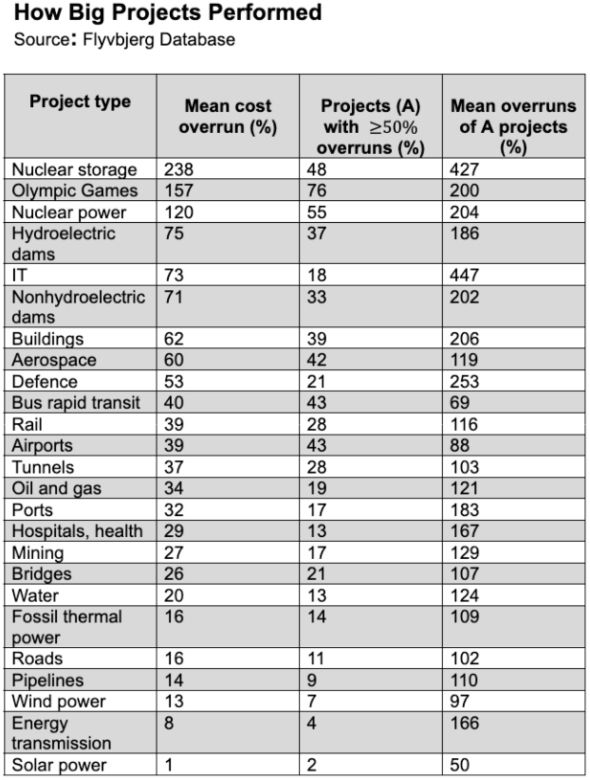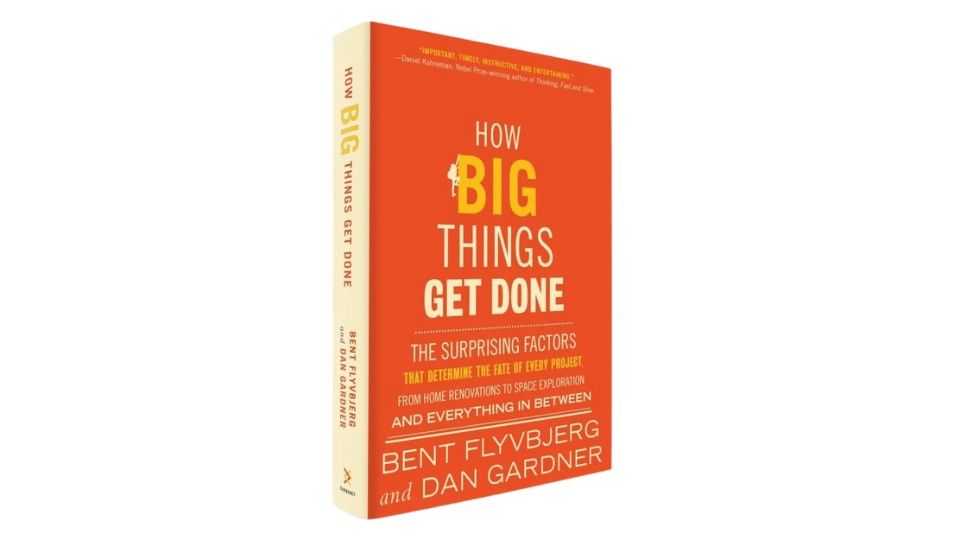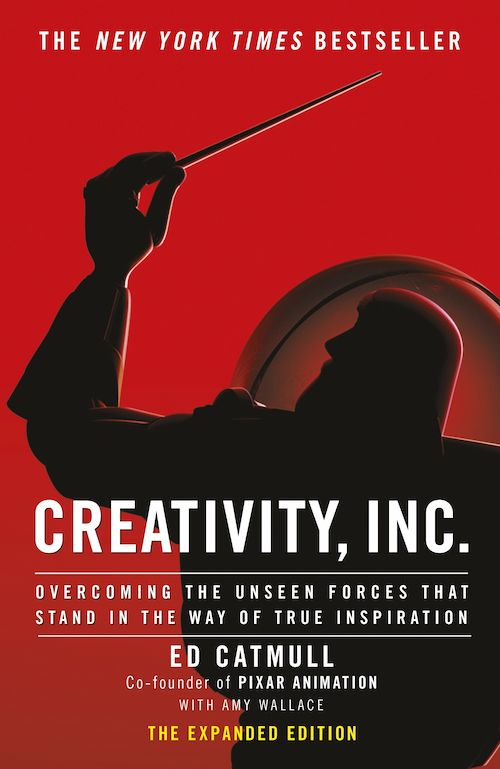📈 What people think
There is a lot of pessimism around big projects. They are never on time and over budget.
Not infrequently, distrust is both local and national. Why can’t USA/UK/Sweden/South Africa build on time and within budget?

📈 Here are the facts
Generally, pessimists are naïve and fallible, but have these people found a niche where negativity seems justified?
The following can be deduced from the world’s largest database of major projects:
- 91.5 percent of projects are over budget, taking longer than planned, or both.
- 99.5 percent of projects are over budget, taking too long, not achieving expected results, or some combination of these.
poor 0.5 percent So all big projects go according to plan or better.
Examples of breakdowns are numerous
Sweden has an infamous tunnel through Hallandsen. 16 years late, toxic corruption and cost 10 times more than estimated.

The Sydney Opera House is an iconic building, but not just in appearance. The budget exceeded 1400 percent.

But the Opera House is third on the list after the Suez Canal and the Scottish Parliament.

Construction work is not the only drag. IT projects are fifth on the list of projects at risk of being overhyped. (Hello, hello Stockholm school stage!)

Is this how it should be?
No.
Another iconic building, The Guggenheim Bilbao was completed on time and cost three percent less than the budget.

It’s not luck, it’s skill. Because there is a method to greatly increase the likelihood that large projects will be completed on time and on budget.
Professor Bent Flyvbjerg, the creator of the Big Projects Database, has reviewed both the failures and the successes. He has developed a method out of it.
💡 Optimist’s Edge
💡 Methodically Think slow, create fast, Can you build bigger and bigger, according to schedule and budget?
Many large projects are not implemented because they fear it will be a costly and delayed failure. Politicians, business leaders and heads of large corporations are risk averse.
Anyone who realizes that you can build on budget and on schedule has an advantage.

👇 This is how you get the Optimist’s Edge
In the book How great things are done A Danish Oxford professor describes, Curved FlyvbjergWhy big (and small) projects often fail, and what can be done about it.
Central is his goal, Think slow, build fast (Inspired by Daniel Kahneman’s Thought, Fast and Slow.)

The example he gives in the book Picture, which is one of the most successful film companies in the world. Their films go through a long process of script work (think) before the actual animation of the film begins (build).
- One or two people have primary responsibility for the script. They create a story and some associated images.
- They present this to a group of people – the Picture Braintrust – who provide feedback.
- Screenwriters take the vision, revise the script and come back to the team.

The process is repeated several times before the actual production of the film begins. No one always gets the green light right away. There’s always feedback and there’s often a big difference between what’s delivered the first time and what ends up in theaters a few years later.
More about Pixar and their creative process in Ed Catmull’s book Creativity Inc.

Solar projects almost never come to fruition
If you look at the list of failed projects, but at the bottom this time, you will see projects with a low risk of being pulled. There is solar energy and wind energy. The risk of a solar energy project running on schedule, budget, or both is only one percent.
The reason is just a typo.
If you can start your project with one building block, add another one like it, and another, and another, until your project is complete. This reduces the risk of unpleasant surprises down the road, because you do the same thing all the time.
So a solar cell becomes a solar panel, which becomes a group of solar panels, which becomes a solar park.

Nuclear power plants often violate, but there is hope
If we look again at the top of the list, we see that nuclear power is in third place. New nuclear power plants are often late and over budget. But one development could reduce the risk: small modular reactors, SMR.
There, most of the final product is mass produced in a single factory. in modules.
Matthias Sundin
An angry believer
Of course, there are many more parts to a successful project, so I recommend the book How great things are done To understand how to build big on time and on budget.

“Passionate beer ninja. Extreme problem solver. Thinker. Professional web fan. Avid communicator. Hardcore troublemaker.”







More Stories
Mockingly mocking in the UK is illegal
Harvesting early and small peas in Britain
Saab is supplying the British Army with a new generation of Arthur radar